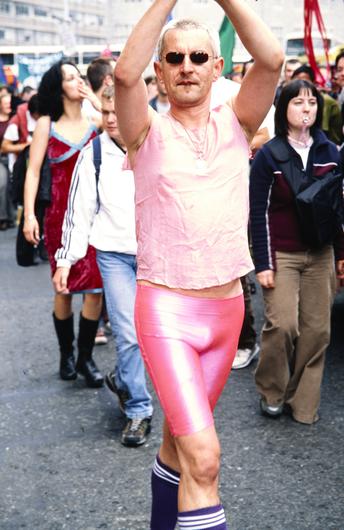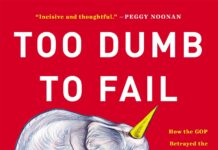One thousand protesting revellers took to the capital’s streets on Saturday, June 26, 1993, to mark Ireland’s 15th LGBT Pride Week. As the march sailed down Dame Street towards the Central Bank plaza, the exuberant crowd let out a massive roar.
What did we want? Gay Rights! When did we get them? Yesterday!”
Just two days earlier, the government — with immaculate timing — passed the Sexual Offences Act, introducing a common age of consent of 17 years that surprised some by going much further than what was on offer in Northern Ireland or Britain. The new law replaced Victorian British legislation that criminalised not only intercourse but any form of intimacy between men — think holding hands or kissing — in private or public.
It was utterly reprehensible legislation that ruined the lives of countless consenting Irish men and was responsible for sending many other gay and bisexual men and lesbians abroad in search of a less hostile social environment. Laws that had legitimised State-sanctioned homophobia since before the foundation of the State were consigned to the rubbish bin of history.
On the steps of the Central Bank that day, drag queens and kings mixed with activists from every part of the island. The city’s most beloved street performer, the Diceman, clad in prison garb and dragging chain and ball (of “oppression”), stripped off and acknowledged his newfound freedom; right down to his leather jock-strap, and even that was flung into the air. No longer a criminal outcast!
The crowd went ballistic, dancing with frenzy and jubilation in what would be one of the last significant events of its kind on those public steps before the Central Bank decided to sanitise its entrance by erecting railings.
There to capture it all was Chris Robson (51), who many years later would describe it as “still possibly the best day of my life”.
Robson, architect, photographer and civil rights activist, had every reason to exult in the joyousness and newfound sense of liberation on view that historic day. Politically active since the late 1970s, along with his life-long partner Bill Foley, he was involved in all the major civil rights battles of the rancorous 80s and had played a significant role in driving forward decriminalisation using the engine of Glen (the Gay and Lesbian Equality Network).
The LGBT non-governmental organisation, founded in 1988, would later push wide open the door of decriminalisation and become a significant facilitator of anti-discrimination and equality legislation, culminating in the Equal Status Act, full marriage equality and gender recognition.
Sadly, Robson would die unexpectedly in 2013. Not long after, Bill transferred 2,000 of Chris’s slides and photographs to the National Library of Ireland (NLI), a selection of which are now on display at the library’s Photographic Archive in the aptly titled show Living with Pride.
Robson’s photos are a joy to behold. From 1992 up until his death, he captured all of the noisy, riotous colour of the LGBT Pride festivals and their transition from a place where we were protesting our pride — indeed our very right to walk the streets free from harm — to having a big queer day out that we could share with one and all.
Pride is so many things to different people.
It is simultaneously a political protest at unfinished business, a street rave, a family day out and a chance to catch up with friends. Heck, it’s even a neutral space for that yearly reunion with ex-lovers. It is a necessary corrective to often drab street life and pervasive heteronormativity.
It is a time to celebrate our relationships and families, both biological and logical. Pride is our journey of self-awareness and discovery writ large for all to see and enjoy.
Gestures of love
Pride makes explicit so many small, everyday gestures of love, desire and belonging that once defined us as outcasts. Gestures that warranted a hiding (or worse), that sent too many men to prison or were declined by long-suffering lesbians in favour of a lonely heterosexual marriage, are made explicit unapologetically and in the knowledge that they are accepted without judgment by the majority of the population.
So here we are today, the inheritors of a new sociocultural and political landscape that was unthinkable a few decades ago. As LGBTI+ Pride festivals continue to pop up with queer abandon all over the country, it’s instructive to remember how fraught and dangerous our early Pride marches actually were.
Robson’s photograph of the National LGBT Federation float in Dublin’s St Patrick’s Day parade of 1992 — a first — is all beaming smiles as they set off. What you don’t see is them later pelted with rotten fruit and vegetables.
Nine years earlier, at the Fairview Park march, 800 of us took to the streets to protest against ‘violence against gays and women’. I expected to have a rock thrown at me as we walked up North Strand, where, a couple of nights beforehand, Declan Flynn’s killers organised a bonfire and victory parade following their release from court.
It was all too easy to believe at that moment that my life — every gay man’s life — had no value. Worse, the State had no interest in our safety or welfare, something that would become even more apparent as the Aids pandemic unfolded in spectacularly brutal fashion.
I was 19 when I went on my first Pride demo, fired up on the innocence and anger of youth and somewhat blind to the dangers lurking about. It was 1980 and the LGBT civil rights movement was still in its infancy, so much so that it was a struggle to organise a march.
Instead, 20 of us wandered around the streets of Dublin, giving out four-page leaflets that explained the history of the Stonewall riots, asking sympathetic and often bemused shoppers to wear a pink carnation or pink triangle as a show of support.
The other high point of the week was a picnic in Merrion Square, where, in later years, the park wardens would move us on. Thankfully, we’ve squared that circle and there’s a delicious irony in Merrion Square — before Covid — being the end point of a 100,000-strong parade and family day out that is open to all the citizens of Dublin.
No longer criminals, we are free to be whoever we want to be. With the corporate sector now tripping over itself to burnish its #diversity credentials and embrace the economic windfall that comes from finally recognising us queers as consumers, you would imagine we have arrived at the promised land.
And yet, each year, we still hear the shrill whine of bigots questioning why we need Pride. “Didn’t ye get everything with marriage equality? Why isn’t there a Straight Pride?”
Unfinished business
It’s at moments like this we recall the unfinished business I mentioned earlier that is the essence of Pride, our necessary big day out. As the most visible, public tip of LGBTI+ liberation, I liken Pride to a contract of acceptance with the citizens of Ireland. Robson’s photographs at NPA display some of that contract, but you’ll have to trawl the main National Library on Dublin’s Kildare Street to acquire even more evidence of our lives: the lives of ordinary people being extraordinary, documented through social ephemera, reports, private correspondence, newsletters, video and audio recordings and the full gamut of documents that make up the Irish Queer Archive (IQA).
One of the largest of its kind in the world, IQA was transferred to the library in 2008. Here was the State finally taking ownership of LGBTI+ heritage, symbolically righting a historic wrong and literally writing Ireland’s sexual minorities back into our formal historical narrative.
With all that the archive hints at, the Robson exhibition has provided a timely opportunity to drill down into the riches that are contained in the IQA special collection. It’s also a reminder of NLI’s responsibility to give real expression to its diversity and inclusion programme.
Curatorial and acquisition policies are undergoing re-evaluation and reform in many countries, not least within national cultural institutions. This is as much a reflection of evolving statutory obligations and changing (and better educated) hierarchies within these institutions, but also a public keen to see itself represented in all its pluralistic imaginings.
Without doubt, Irish LGBTI+ cultural heritage is having its long-overdue moment and I laud the development of the Rainbow Revolution trail at the National Museum of Ireland, Sara Phillips’ Trans Archive, ‘Out in the World’ at Epic: the Irish Emigration Museum, the Cork Queer Archive and the annual offering that is Outing the Past at the National Gallery of Ireland.
Having had a long association with the Irish Queer Archive, I’m especially delighted to see NLI complement the Robson exhibition with a programme of discussions, interviews and displays that focuses on our contemporary, queer lived experience and uncovers more of those hidden treasures contained in the archive. This is as it should be. The National Library is, after all, Ireland’s primary memory keeper.
And, given the dystopian times we’re slowly emerging from, Christopher Robson’s exhibition is the closest thing we’ll experience to a parade this year. For that, I’m eternally grateful.
Living with Pride: Photographs by Christopher Robson is open at the National Photographic Archive, Meeting House Square, Temple Bar, and runs until the end of the year. For more information, to view the exhibition and for the most up-to-date programme of events, visit nli.ie









